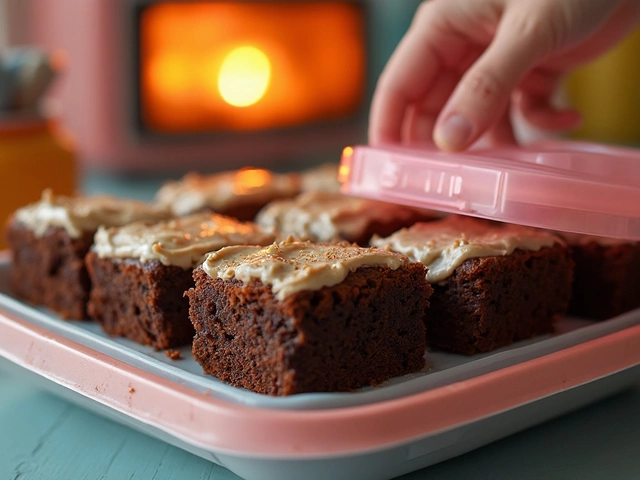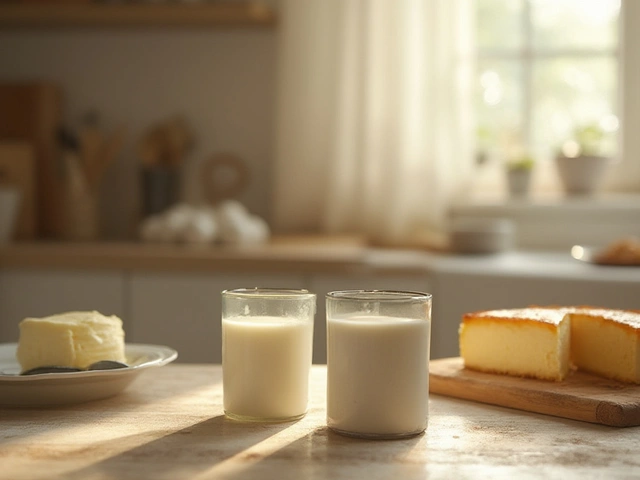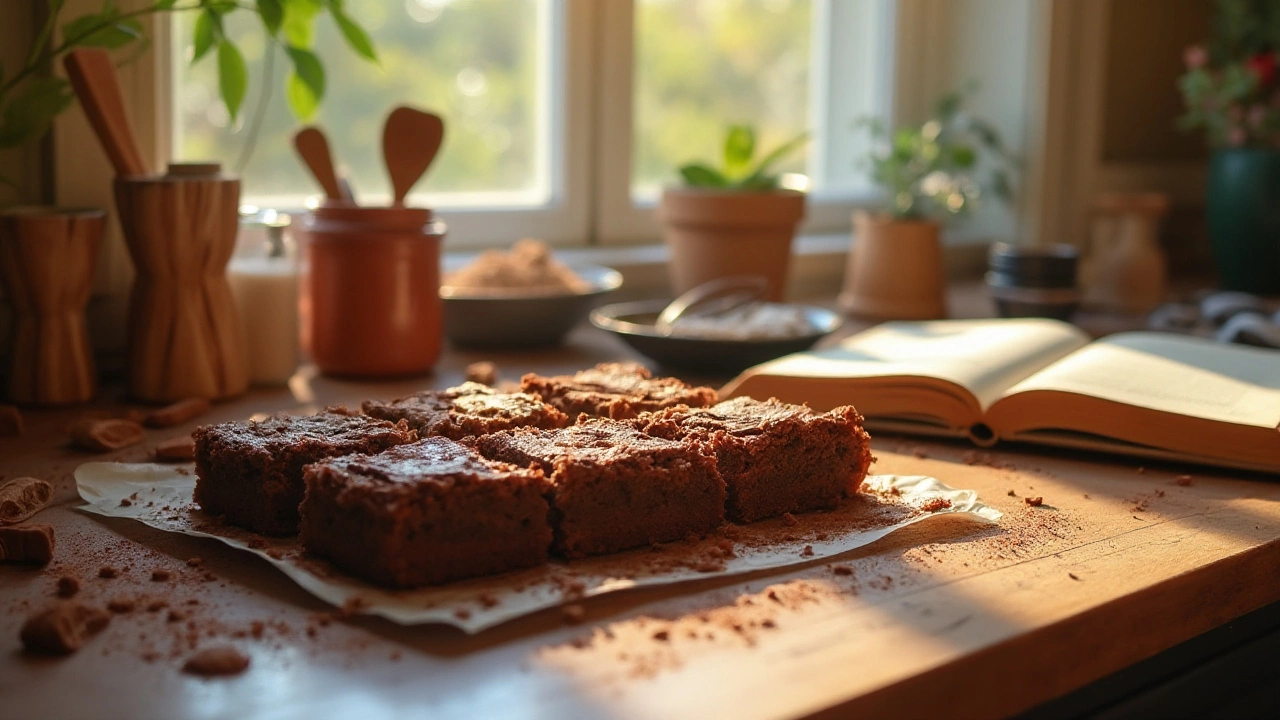
Brownies—a delicious indulgence that captures the hearts of many chocolate lovers. But what truly defines a perfect brownie? Is it the crispy edges, the gooey center, or the exquisite taste of chocolate goodness melting in your mouth?
Understanding brownies means diving into their texture, balance, and flavor. Exploring the various techniques and ingredients can lead to an infinite world of sweet possibilities. Whether you're a seasoned baker or just starting out, mastering this chocolate treat requires a bit of trial, a pinch of patience, and a whole lot of love.
- Characteristics of Brownies
- The Science Behind Baking Brownies
- Ingredients and Their Impact
- Tips for Perfect Brownies
Characteristics of Brownies
In the realm of baking, few treats have earned as much universal adoration as the brownie. At the heart of this dessert lies a sumptuous blend of texture and flavor that appeals to a wide audience. A quintessential brownie is often characterized by its richness and depth of chocolate flavor, poised perfectly between the lightness of a cake and the denseness of fudge. What's particularly alluring about brownies is their versatility in texture; some prefer them boldly chewy whereas others might lean towards a soft, almost gooey consistency. Irrespective of personal preference, the hallmark of a great brownie is its balance—a flawless harmony of flaky crust on top contrasting with a moist, almost molten interior.
The simplicity and charm of a brownie arise from its humble ingredients. Traditionally composed of butter, sugar, eggs, flour, and cocoa or chocolate, brownies are testament to the idea that true culinary brilliance often stems from simplicity. Despite their simple ingredient list, achieving the desired flavor and texture requires precision and care. It's fascinating how subtle changes, whether it's the type of sweetening agent or the ratio between flour and fat, can dramatically affect the outcome. This is where the artistry of baking comes into play, offering creative flexibility without veering too far from its core identity.
What truly sets the brownie apart is the science behind its creation. The chemical reactions during baking, such as Maillard reaction, contribute to the distinct browning and aroma we savor in each morsel. Cocoa powder or chocolate—key ingredients—are not just flavor agents; they also influence the structural integrity of the dessert. Depending on whether cocoa powder, unsweetened chocolate, or a combination is used, the brownie can deliver a variety of flavor profiles and textures. This interplay between choice of ingredients and baking technique opens doors to endless experimentation while still staying true to the essence of this chocolatey creation.
In the words of Julia Child, an iconic figure in the culinary world, "A party without cake is just a meeting." Although she speaks of cake, her sentiment resonates with the role brownies play in our gatherings. The authenticity of flavor in a bespoke brownie comes from not only its meticulous preparation but also the contextual love poured into it by the baker. For those who wish to scale the heights of brownie perfection, understanding the physics and chemistry behind this delightful treat is key to defying standard expectations and crafting an experience that delights all senses.
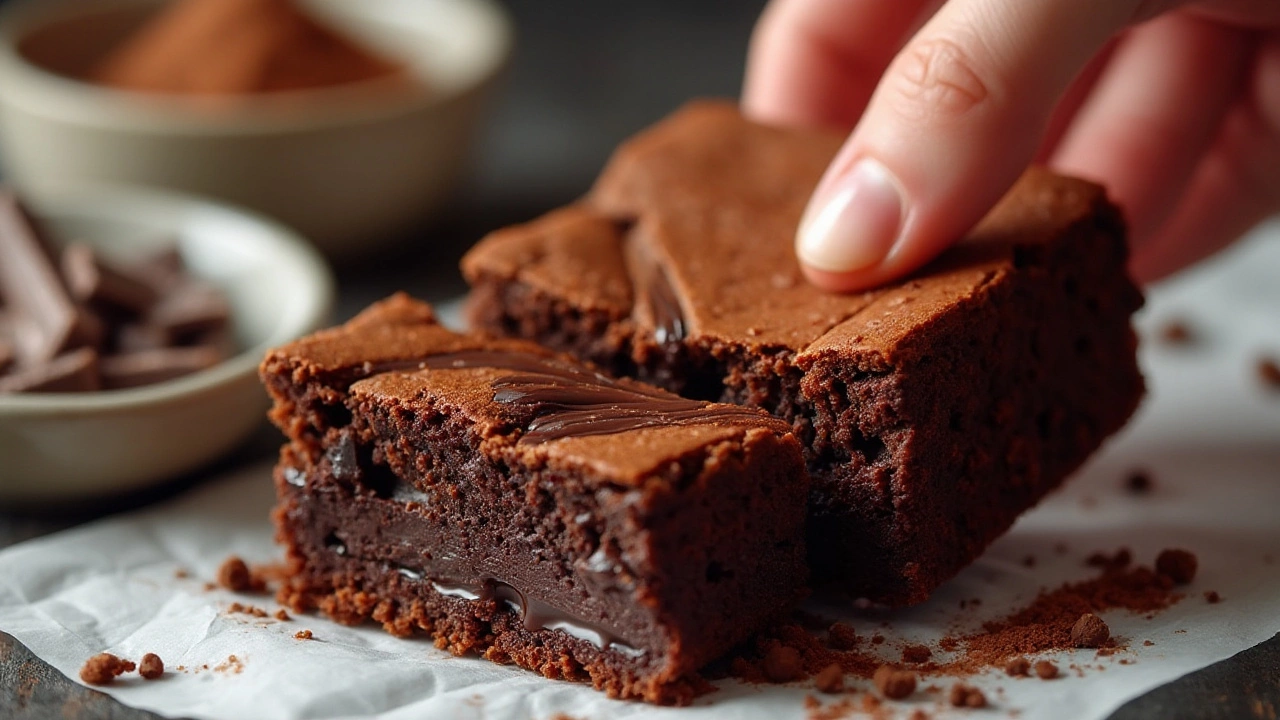
The Science Behind Baking Brownies
The irresistible allure of brownies comes not just from their chocolatey goodness but from the fascinating chemistry that occurs during baking. At its core, the process involves transforming a wet batter into solid bars that balance between fudget and cake-like textures. One of the pivotal elements in this transformation is the role of eggs. Eggs act as both a binding and leavening agent in chocolate desserts, adding structure while also helping the batter rise. The trick is understanding the symmetry between the eggs and the sugar, which contributes to the crusty top layer that defines an iconic brownie.
Another critical component is the type of cocoa used. The quality of cocoa not only affects the flavor but also impacts the texture of the finished product. Dutch-processed cocoa, for instance, is treated to reduce acidity, lending a more mellow flavor and a darker appearance. This type of cocoa can slightly alter the pH balance, affecting the brownie’s rise and crumb. To amplify the *homemade brownies* experience, some bakers opt to melt chocolate instead of just using cocoa powder, leading to a richer density and moist crumb.
"The secret to perfect brownies lies in the precise balance of ingredients and baking time. Too long, and they dry out; too short, and they will not set." — Baking Expert, Mary Berry
The choice of fat is another science-backed choice that has a noticeable impact on the final result. Butter is the traditional choice, lending a creamy flavor and helping to create a rich crumb. However, oil can be used to achieve a softer texture, and it keeps the brownies moist even after cooling. Deciding on the perfect balance between butter and oil can sometimes spell the difference between mediocre and magnificent brownies.
Time and temperature are paramount. Baking them at too high a temperature will leave the edges burnt and the middle undercooked. Conversely, a lower temperature ensures an even bake, letting the batter cook thoroughly without drying out. It's this careful consideration of dynamic elements, adjusting them based on your specific preferences, that turns simple recipes into divinely tasty brownies.
To exemplify how various ingredient choices influence final outcomes, consider the following simplified guide:
| Ingredient | Impact on Texture |
|---|---|
| Eggs | Adds structure; impacts rise and crust |
| Cocoa Powder | Influences color; Dutch-process gives smoother flavor |
| Butter | Provides creamy taste; keeps crumb rich |
| Oil | Makes texture softer and remains moist |
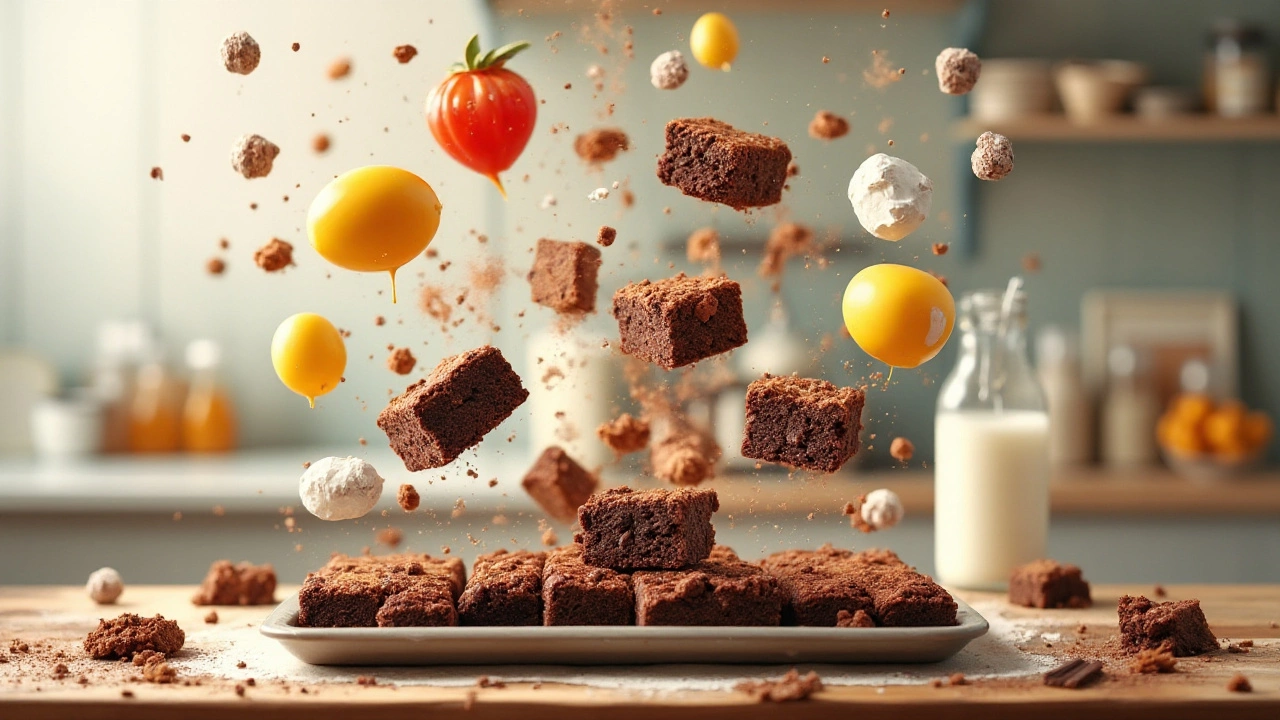
Ingredients and Their Impact
When it comes to baking brownies, ingredients play an indispensable role in determining whether your creation becomes the rich, gooey delight that dreams are made of, or a dry, crumbly disappointment. To nail the perfect texture and taste, understanding each ingredient's function is crucial. The choice of flour can change everything. All-purpose flour is typically used in brownie recipes because it offers a balance of structure and softness; however, using cake flour may yield a more tender bite, which some find tantalizing. On the flip side, too much flour can lead to a dense product, so measurement precision is critical.
Chocolate, the star of any brownie, must be selected with care. The depth of flavor emanating from high-quality cocoa powder and chocolate chips is unmatched. Opting for dark chocolate might give your homemade brownies a robust essence that surprises the palate, while milk chocolate can create a sweeter and lighter experience. Brown sugar brings moisture to the party, imparting a caramelly undertone that complements the chocolate magnificently. Some bakers even suggest using both brown and white sugar for a nuanced juxtaposition of flavors and textures.
Butter is another key player in the brownie game. It offers the fat needed to create a velvety texture, and when melted, it integrates seamlessly with chocolate, forming the base of the batter. Alternatives like vegetable oil can be used for added moisture and a deep fudgy outcome, though it might sacrifice a bit of the butter's rich flavor. This harkens to the choice between cake-like and fudge-like brownies, a preference unique to every individual.
"The secret to a spectacular brownie lies not just in technique, but also in the quality and balance of its ingredients," remarked acclaimed pastry chef Alice Medrich, whose insights have transformed many novice bakers into proficient artisans.
Eggs act as emulsifiers in the batter; they bind the ingredients and hold the structure together during baking. Beating eggs in the mixture can add air, which might result in a lighter brownie, while simply folding them in helps maintain a denser texture. Adjusting the number of eggs is a neat trick to tweak the chewiness of the end product. A pinch of salt may seem trivial, yet it accentuates all the flavors, elevating the allure of these chocolate desserts to new heights.
Mix-Ins and Variations
Adding nuts, dried fruits, or even spices can transform your brownies into something sensational. For a nutty crunch, walnuts are a popular choice, melding beautifully with the chocolate. Experimenting with spices like cayenne’ or cinnamon infuses brownies with an exotic zest. Vanilla extract, while subtle on its own, amplifies the chocolate's richness. Play around with these elements to bring unique twists to your staple recipe. Whether you're a purist or an adventurer in the world of flavors, every baker can find the perfect combination that makes their heart sing. Variety, after all, is the spice of life.
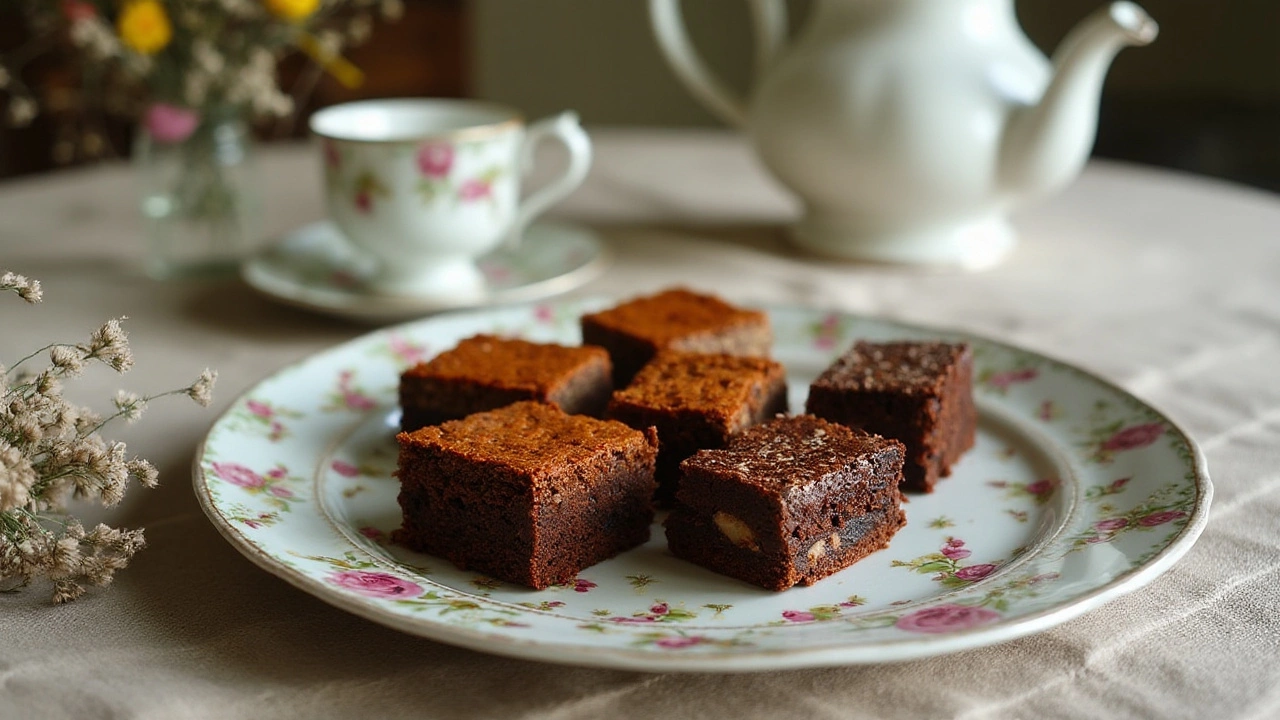
Tips for Perfect Brownies
Embarking on the journey to bake perfect brownies is thrilling yet requires attention to detail. Achieving the right texture is critical. Start by meticulously measuring your ingredients. Precision ensures a perfect blend of dry and wet. To melt chocolate smoothly without burning, opt for a double boiler method instead of using direct heat. Patience as it melts is critical, as high heat can scorch the chocolate, impacting both flavor and texture. Remember, high-quality cocoa can transform your brownies; the richer the cocoa, the more decadent the chocolate dessert will be.
Another secret weapon to mastering homemade brownies is using room temperature ingredients, particularly eggs and butter. Cold staples can alter the batter's metaphysical consistency, leading to uneven baking. When mixing, avoid over-stirring as it can introduce too much air, leading to cakier brownies instead of the characteristic fudginess many crave. To adapt the density of the treat, tweak flour and cocoa portions based on preference. For those aiming for a chewier texture, consider brown sugar instead of white, as it introduces a touch more moisture and richness to each bite.
“Just like any cherished piece of art, the best baking comes from both the heart and kitchen science.” — Julia Reed, acclaimed culinary writer.
The baking process itself requires finesse. Position your rack in the center of the oven for optimal heat distribution, ensuring evenly cooked brownies. Resist opening the oven frequently; each peek can cause fluctuations in temperature. Timing is pivotal. When in doubt, use the classic toothpick method — insert it into the center; a few moist crumbs mean readiness, while wet batter needs additional minutes. After baking, let them cool completely in the pan for clean cuts and defined pieces.
Serving and storing also play roles in maintaining the perfect brownie experience. To elevate flavors, some aficionados sprinkle a pinch of sea salt atop the warm brownies, juxtaposing the sweetness with a nuanced complexity. Proper storage is also paramount. Keep them in a sealed container to retain moisture, ensuring every bite is decadent as the day they were baked. Freezing for long-term storage is viable too. For optimal enjoyment, reheat these stored treasures for a few seconds to revive their gooey texture and strong chocolate essence.


